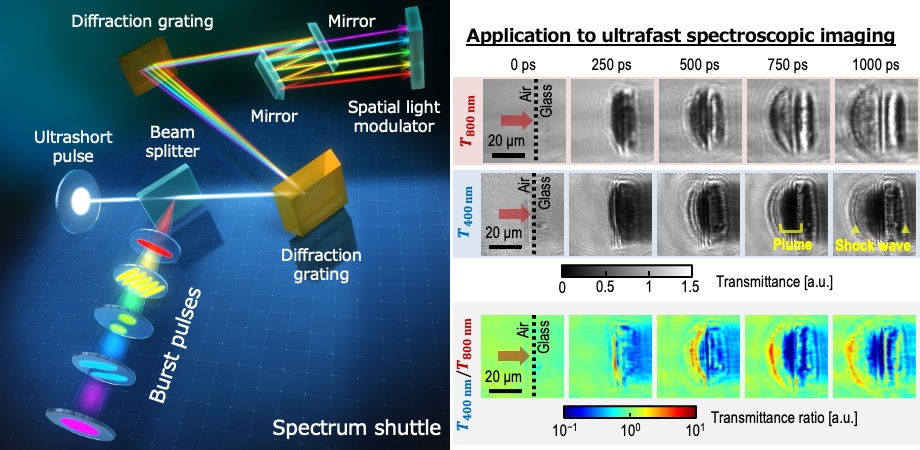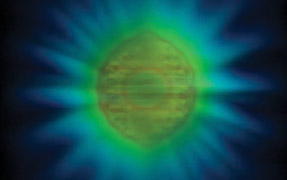Innovative optical technique for simultaneously producing and shaping gigahertz burst pulses

The generation and manipulation of high-repetition pulses hold great promise across various applications, including high-speed photography, laser processing, and acoustic wave generation. Gigahertz (GHz) burst pulses, with intervals ranging from ~0.01 to ~10 nanoseconds, are particularly valued for visualizing ultrafast phenomena and improving laser processing efficiency.
While methods for producing GHz burst pulses exist, challenges persist, such as low throughput of pulse energy, poor tunability of pulse intervals, and the complexity of existing systems. Furthermore, shaping the spatial profile of each GHz burst pulse faces limitations due to the inadequate response of spatial light modulators.
Addressing these challenges, a research team from the University of Tokyo and Saitama University has developed an innovative optical technique named “spectrum shuttle,” which enables simultaneously the production of GHz burst pulses and the individual shaping of their spatial profiles.
The method involves dispersing an ultrashort pulse horizontally through diffraction gratings, spatially separating the pulse into different wavelengths using parallel mirrors. These vertically aligned pulses undergo individual spatial modulation using a spatial light modulator. The resulting modulated pulses, with varied time delays in the GHz range, yield spectrally separated GHz burst pulses, each uniquely shaped in its spatial profile.
As reported in the Gold Open Access journal Advanced Photonics Nexus, the proposed method successfully produced GHz burst pulses with discretely varied wavelengths and temporal intervals. It demonstrated the shaping of spatial profiles, including position shifts and peak splitting. The method's application in ultrafast spectroscopic imaging showcased its ability to capture dynamics in different wavelength bands simultaneously.
The method facilitates ultrafast imaging within subnanosecond to nanosecond timescales, enabling the analysis of rapid, non-repetitive phenomena. Its potential applications include uncovering unknown ultrafast phenomena and monitoring fast physical processes in industrial settings. The ability to shape GHz burst pulses individually also holds promise in precision laser processing and laser therapy.
Notably, the compact design of the proposed method enhances its portability, making it applicable across scientific research facilities and various industrial technology sectors.
"Our unique optical configuration allows for the manipulation of ultrashort pulses with a three-dimensional optical path, enabling unprecedented spatial manipulation of GHz burst pulses," says Keitaro Shimada, a PhD candidate in the Department of Bioengineering at the University of Tokyo. He adds, "Spectrum shuttle offers a wide range of GHz burst pulses with intervals ranging from 10 picoseconds to 10 nanoseconds. I believe that applications based on our technique, aimed at various targets such as plasmas, metals, and cells, will accelerate scientific discoveries and technological innovations in industry and medicine."
The innovative technique opens avenues for advancing ultrafast imaging, with implications for both scientific research and industrial applications. Its ability to simultaneously produce and shape GHz burst pulses introduces a versatile tool for studying rapid phenomena and enhancing laser-based processes.
For details, read the original article by Shimada et al., “Spectrum shuttle for producing spatially shapable GHz burst pulses,” Adv. Photon. Nexus 3(1), 016002 (2024), doi 10.1117/1.APN.3.1.016002
| Enjoy this article? Get similar news in your inbox |
|



